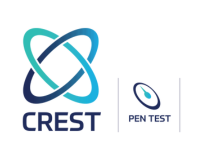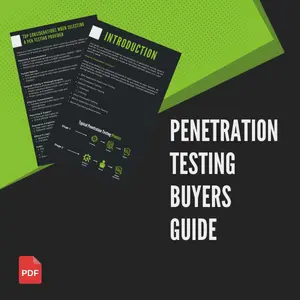What is a Mobile Application Penetration Test?
Mobile Application Penetration Testing is a crucial process that aims to identify and rectify vulnerabilities within mobile applications before they can be exploited for malicious purposes. This testing can be conducted manually or through automated penetration testing tools to analyse the severity of threats posed by identified vulnerabilities.
Mobile App Penetration Testing typically adheres to a structured methodology, employing industry-standard techniques and procedures that are diligently followed by a proficient penetration tester. By conducting this rigorous security examination, organisations can proactively strengthen their mobile apps’ security and protect sensitive user data from being compromised.
Common Mobile Application Security Vulnerabilities
This vulnerability arises when applications handle user credentials insecurely. Common issues include storing passwords in plain text, hardcoding credentials within the application, and transmitting credentials without encryption.
Want to find out if your Mobile Application has these vulnerabilities?

What does choosing a CREST provider mean?
Grey, Black and White Box Penetration Testing
What does Mobile Application Security Testing include?
Insecure Data Storage
Weak Biometric Authentication
Improper SSL Pinning (SSL Certificate Pinning)
Hardcoded API Keys
Insecure Authorisation
Excessive Permissions
Insecure Data Transmission
Leaked Debug Information
Jailbreak/Root Detection Bypass
Insecure Third-Party Libraries
Inadequate Session Timeout
Improper Platform Usage
What are the benefits of Mobile Application Security Testing?
The proliferation of mobile applications spans various personal and business uses, encompassing sectors like entertainment, finance, communication, and more, thereby necessitating robust mobile application security. The benefits of mobile application penetration testing are manifold, including:
Mobile Application Penetration Testing Methodology
The methodology of Mobile Application Penetration Testing is structured and follows established standards to ensure a thorough examination of mobile applications. The Open Web Application Security Project (OWASP) provides a solid foundation for this through its Mobile Application Security Verification Standard (MASVS), Mobile Security Testing Guide (MASTG), and Mobile App Security Checklist. Our security testers use the MASTG as a basis for conducting a mobile app penetration test
The Mobile Application Security Verification Standard (MASVS) organises security controls into distinct groups, each labelled as MASVS-XXXXX, targeting critical areas of the mobile attack surface. Here’s a breakdown of these control groups and a brief description of each:
Ensures the secure storage of sensitive data on the device, safeguarding data-at-rest from unauthorised access.
Utilises cryptographic functions to shield sensitive data, ensuring it remains inaccessible to malicious actors.
Implements robust authentication and authorisation mechanisms within the mobile app, ensuring only authorised entities can access critical functionalities.
Ensures the secure transmission of data between the mobile app and remote endpoints, protecting data-in-transit from interception and tampering.
Manages secure interactions between the mobile app, the underlying mobile platform, and other installed apps, preventing potential security risks.
Adheres to security best practices for data processing and app maintenance, ensuring the app remains updated and secure against emerging threat
Enhances the app’s resilience to reverse engineering and tampering attempts, ensuring the integrity and confidentiality of the app and its data.
Our commitment to the environment
We believe all companies should be taking the climate crisis seriously, this is why we make a donation every time someone purchases some services from us (10 Tonnes – Carbon Offsetting for your Business).
More information on MakeItWild can be found here.
Contact a consulting team member by phone, email, or pigeon post. We will then discuss whether we can help you and arrange a scoping meeting to discuss your requirements.
In the scoping meeting, our team will discuss your requirements in further detail. Our team will ask questions in regards to the following:
Our expert consultants will discuss and finalise which digital assets you need testing in the scoping meeting. Based on the requirements, we will then assemble a project proposal and quote and agree on a schedule for conducting the security assessment. Our proposal document will include the following information:
The Penetration Testing starts. A member of our Penetration Testing team will liaise with a member of your company throughout the entire testing process. You will be the first to know if we have any questions or concerns. Our testing team will be on hand throughout the penetration test lifecycle to answer any questions or concerns. Our tester will:
A Penetration Test is useless without a well-written report. Our reports are written in plain English, concise, and thoroughly documented. The Penetration Test Report is typically furnished within 5 days after the testing phase is complete. If you are interested in seeing an example report, please contact our team.
Each report details the following:
At Sencode, we offer free retesting for every Penetration Test we conduct. You fix the issues; then we will verify they can no longer be exploited by an attacker. Our team will arrange a mutually suitable time to conduct the retest, after the remediation efforts have taken place. Our tester will follow these steps:
Our clients receive a testing certificate that can be shared with partners and customers, showing that their company takes security seriously. The certificate and document are designed to be easily digested by third-party suppliers, the document removes the technical details and can be safely distributed.
The Security Testing Certificate is available on request, after the retest has been complete. The security certificate shows:
Get in touch for a consultation.
Contact a consulting team member by phone, email, or pigeon post. We will then discuss whether we can help you and arrange a scoping meeting to discuss your requirements.
In the scoping meeting, our team will discuss your requirements in further detail. Our team will ask questions in regards to the following:
Testimonials
Huler
Trinity College Dublin
Diversity and Ability
Verve Group
Pip Studios
Home Group









Frequently Asked Questions: Mobile Application Security Testing
Globally, there are nearly 9 million mobile apps hosted across platforms like the Apple App Store™ and Google Play™; organisations are compelled to ensure the robust security of their mobile applications against a diverse range of cyber threats.
Mobile application penetration testing is a pivotal process that scrutinises mobile apps to detect and identify vulnerabilities before they can be exploited for malicious gain. This process, which can be executed through manual or automated penetration testing, analyses the severity posed by potential threats to the application.
Recent data breaches, such as those experienced by Twitter, T-Mobile, and LinkedIn, underscore the criticality of securing mobile applications against potential threats and vulnerabilities. These incidents have exposed millions of users’ personal data and highlighted the significant risks posed by security flaws in mobile apps.
Types of mobile applications to consider getting tested:
Native Mobile Apps: Developed for specific platforms like Android or iOS, using languages such as Java, Kotlin, Swift, and more.
Hybrid Apps: Combining elements of both iOS and Android applications, they can be downloaded from various app stores.
Progressive Web Apps (PWA): Web apps that function like mobile apps, providing a seamless user experience across platforms.
Every mobile application, irrespective of its use and audience, should be developed with a security framework in mind. The necessity for a penetration test, however, can be contingent upon the nature and sensitivity of the data managed by the application and its associated databases. OWASP MASVS offers several levels of testing, detailed below:
Here’s a bit more detail about each level:
MASVS-L1 (Standard Security): Serving as the foundational security benchmark, this level mandates that all mobile applications comply with essential security controls, addressing fundamental aspects like data security, network communication integrity, and rudimentary system interactions.
MASVS-L2 (Defense-in-Depth): This tier is tailored for applications that manage more sensitive data and functionalities. It demands exhaustive threat modelling and security verification, enveloping all controls from L1 while introducing additional ones to mitigate more sophisticated attacks.
MASVS-R (Resiliency Against Reverse Engineering and Tampering): This level is designed for applications that navigate through highly sensitive data and are susceptible to advanced client-side attacks. It amalgamates all controls from L2 and fortifies them with additional measures to shield against client-side vulnerabilities, such as tampering and reverse engineering.
Because mobile applications differ from web applications, evaluating them requires a new approach.
OWASP-MASVS was created primarily to help penetration testers discover mobile application security vulnerabilities. This can comprise a variety of strategies aimed at protecting mobile apps against various forms of cyber threats.










